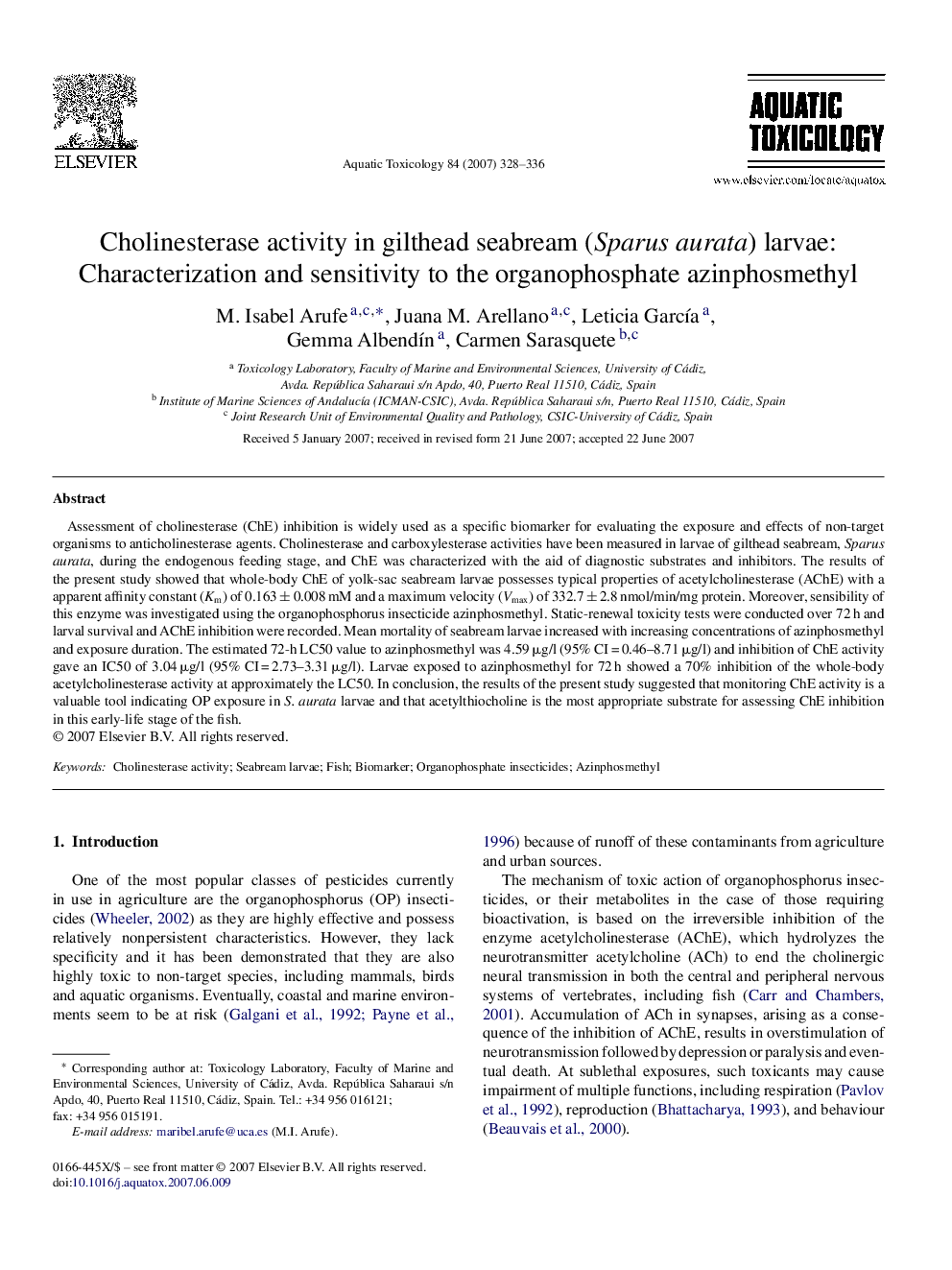| Article ID | Journal | Published Year | Pages | File Type |
|---|---|---|---|---|
| 4530964 | Aquatic Toxicology | 2007 | 9 Pages |
Abstract
Assessment of cholinesterase (ChE) inhibition is widely used as a specific biomarker for evaluating the exposure and effects of non-target organisms to anticholinesterase agents. Cholinesterase and carboxylesterase activities have been measured in larvae of gilthead seabream, Sparus aurata, during the endogenous feeding stage, and ChE was characterized with the aid of diagnostic substrates and inhibitors. The results of the present study showed that whole-body ChE of yolk-sac seabream larvae possesses typical properties of acetylcholinesterase (AChE) with a apparent affinity constant (Km) of 0.163 ± 0.008 mM and a maximum velocity (Vmax) of 332.7 ± 2.8 nmol/min/mg protein. Moreover, sensibility of this enzyme was investigated using the organophosphorus insecticide azinphosmethyl. Static-renewal toxicity tests were conducted over 72 h and larval survival and AChE inhibition were recorded. Mean mortality of seabream larvae increased with increasing concentrations of azinphosmethyl and exposure duration. The estimated 72-h LC50 value to azinphosmethyl was 4.59 μg/l (95% CI = 0.46-8.71 μg/l) and inhibition of ChE activity gave an IC50 of 3.04 μg/l (95% CI = 2.73-3.31 μg/l). Larvae exposed to azinphosmethyl for 72 h showed a 70% inhibition of the whole-body acetylcholinesterase activity at approximately the LC50. In conclusion, the results of the present study suggested that monitoring ChE activity is a valuable tool indicating OP exposure in S. aurata larvae and that acetylthiocholine is the most appropriate substrate for assessing ChE inhibition in this early-life stage of the fish.
Related Topics
Life Sciences
Agricultural and Biological Sciences
Aquatic Science
Authors
M. Isabel Arufe, Juana M. Arellano, Leticia GarcÃa, Gemma AlbendÃn, Carmen Sarasquete,
